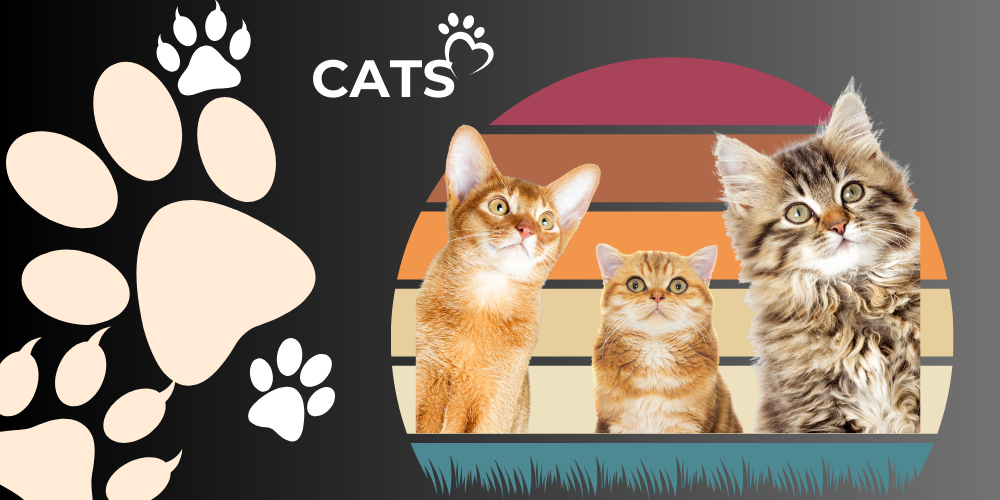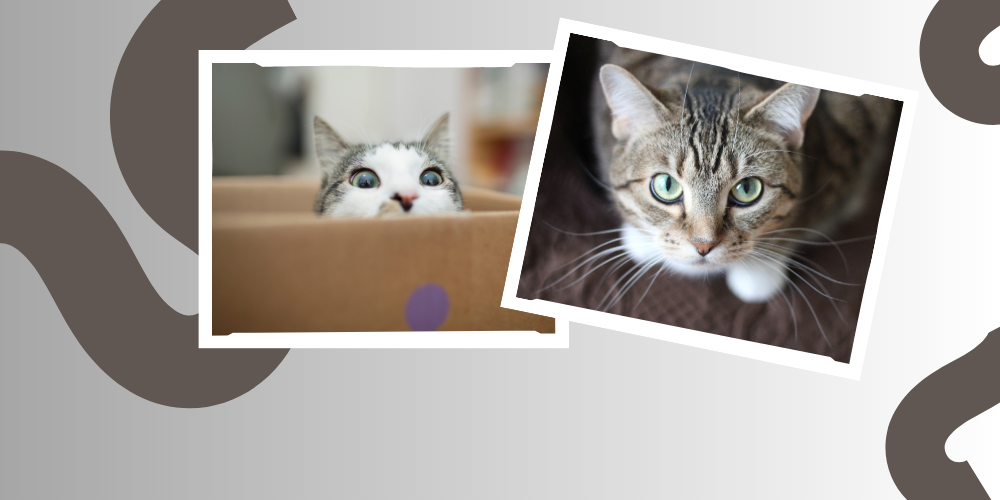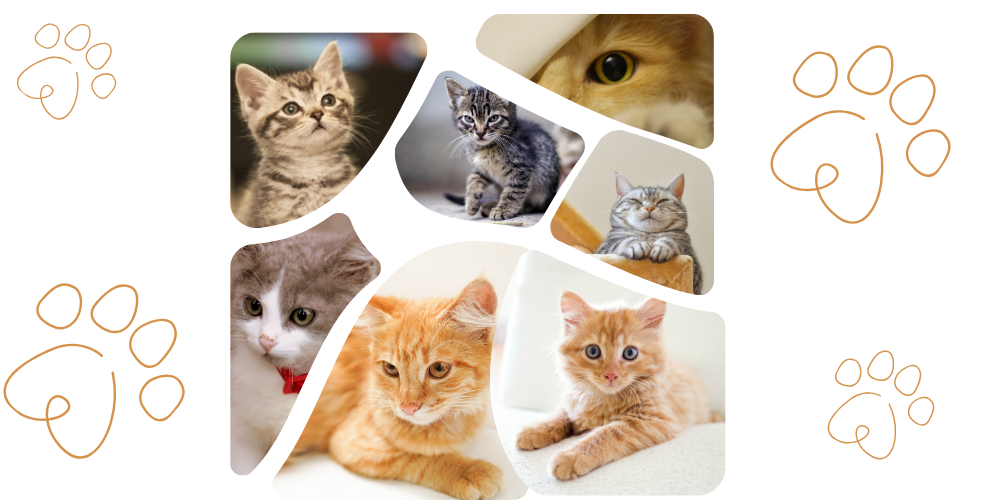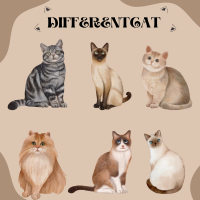Ragdoll cat Types are known for their stunning appearance, affectionate nature, and diverse types that capture the hearts of cat lovers worldwide. Whether you’re considering adopting a Ragdoll or you’re a seasoned cat enthusiast, understanding the various types, colors, patterns, and specific care requirements is crucial. This article will dive deep into everything you need to know about Ragdoll cat types, covering subtopics such as their physical traits, coat patterns, feeding habits, and more.
1. What is a Ragdoll Cat?
Ragdoll cats are a popular breed recognized for their calm demeanor, striking blue eyes, and semi-long, silky coats. Developed in the 1960s by Ann Baker, a cat breeder in California, Ragdolls are known for their large size, friendly personality, and tendency to go limp like a “ragdoll” when picked up—hence the name. But not all Ragdolls are the same; they come in a variety of types, each with unique characteristics that appeal to different cat enthusiasts.

2.Ragdoll Cat Types Different
Ragdolls can be classified based on various factors such as color, coat patterns, and point colors. Let’s explore these in detail:
Ragdoll Cat Types:
The Seal Ragdoll
The Seal Ragdoll cat is characterized by its dark brown to nearly black “seal” color points, which appear on the ears, face, paws, and tail, contrasting with a creamy beige or fawn-colored body. This color combination creates a striking and beautiful appearance, with the dark points becoming more pronounced as the cat matures. Seal Ragdolls typically have deep blue eyes, which are a hallmark of the breed, and their coat is soft, silky, and semi-long, giving them a luxurious look. Known for their affectionate, gentle, and laid-back temperament, Seal Ragdolls are excellent companions and are loved for their calm and friendly nature.
Ragdoll Cat Types: The Blue Ragdoll cat
The Blue Ragdoll cat is known for its elegant and cool-toned appearance, featuring blue-grey points on the ears, face, paws, and tail, set against a lighter, silvery-grey or bluish-white body. The blue color is soft and muted, creating a stunning contrast that highlights the cat’s vivid blue eyes, which are a distinctive trait of the Ragdoll breed. Blue Ragdolls have a silky, semi-long coat that enhances their plush, fluffy look, making them appear both regal and approachable. They are cherished for their calm and affectionate demeanor, often forming strong bonds with their owners and enjoying close companionship and gentle play.
Ragdoll Cat Types :The Chocolate Ragdoll
The Chocolate Ragdoll cat is a rare and enchanting variety, distinguished by its warm, milk-chocolate-colored points on the ears, face, paws, and tail, which contrast beautifully against a creamy ivory or pale beige body. This color combination gives the Chocolate Ragdoll a soft and appealing appearance, often accentuated by their bright blue eyes, a signature feature of the breed. Their silky, semi-long coat is luxurious to the touch, enhancing their plush and cuddly look. Known for their gentle and loving nature, Chocolate Ragdolls are highly sociable and enjoy spending time with their human companions, making them ideal pets for families and individuals alike.
Ragdoll Cat Lilac
The Lilac Ragdoll cat is a delicate and unique type, featuring soft, frosty pinkish-grey points on the ears, face, paws, and tail, set against an almost white or very pale, creamy body. This subtle coloration gives the Lilac Ragdoll an ethereal and elegant appearance, complemented by the breed’s deep blue eyes, which stand out strikingly against the light coat. The Lilac Ragdoll’s semi-long, silky fur enhances its graceful look, making it a true showstopper among Ragdolls. Renowned for their sweet, affectionate, and easygoing temperament, Lilac Ragdolls thrive on companionship and are known to be gentle, loving pets that enjoy both cuddling and playtime.
The Red Ragdoll cat
The Red Ragdoll cat, also known as the Flame Ragdoll, is a striking variety distinguished by its vibrant reddish-orange points on the ears, face, paws, and tail, which contrast with a creamy white or pale apricot-colored body. This warm and fiery color pattern gives the Red Ragdoll a unique and eye-catching appearance, further highlighted by the breed’s signature deep blue eyes. The Red Ragdoll’s soft, semi-long coat adds to its plush, luxurious look, making it a visually stunning companion. Like all Ragdolls, Red Ragdolls are known for their calm, affectionate nature, and they thrive in environments where they receive plenty of love, attention, and gentle handling.
The Cream Ragdoll cat
The Cream Ragdoll cat is a charming and rare variety, characterized by its soft, pale cream points on the ears, face, paws, and tail, which blend subtly with a lighter cream or near-white body. This delicate color palette gives the Cream Ragdoll a soft and dreamy appearance, accentuating its large, expressive blue eyes, a defining feature of the breed. The Cream Ragdoll’s silky, semi-long fur adds to its gentle, plush look, making it highly appealing to those who love the breed’s unique elegance. Known for their sweet, affectionate nature, Cream Ragdolls are friendly, sociable pets that enjoy interacting with their owners and make wonderful companions in any household.
a) Colors and Patterns of Ragdoll Cats
Ragdolls come in six main colors: seal, blue, chocolate, lilac, red, and cream. Each color can be combined with different patterns:
- Colorpoint: The traditional pattern where the ears, face, paws, and tail are darker than the rest of the body.
- Mitted: Similar to the colorpoint but with white mittens on the paws and a white chin.
- Bicolor: Features a white inverted “V” shape on the face, with white extending to the legs and belly.
- Van Pattern: Almost entirely white with some color on the ears, tail, and face.
Understanding these color and pattern combinations is crucial for differentiating between the various Ragdoll Cat Types.
b) Seal Point Ragdoll
The Seal Point Ragdoll has deep, dark brown points on the ears, face, paws, and tail, contrasting with a lighter body color. This is one of the most popular and classic types of Ragdolls. The body is typically cream or fawn, accentuating the rich, dark points.
c) Blue Point Ragdoll
Blue Point Ragdolls are similar to Seal Points but with grayish-blue points instead of brown. Their bodies tend to be a cool-toned white or pale gray, giving them a striking appearance.
d) Cream Mink Ragdoll
The Cream Mink Ragdoll is known for its rare, plush coat that has a mink-like quality. The color of the coat is a pale, creamy hue with a warm undertone, making it unique among Ragdoll types.
e) Seal Tortie Point Ragdoll
The Seal Tortie Point Ragdoll combines the dark seal points with patches of red or cream, giving a tortoiseshell-like appearance on the ears, face, paws, and tail. This type is particularly loved for its distinctive, multi-colored markings.
3. Understanding Ragdoll Cat Types Breed and Coat Types
Ragdolls have a medium-length coat that requires regular grooming. Different coat types include:
- Traditional: Soft, semi-long, and requires moderate grooming.
- Mink Ragdoll: A denser, thicker coat with a plush texture.

The type of brush or comb you use depends on the coat type. A slicker brush is ideal for regular grooming, while a metal comb helps remove tangles and mats.
4. Ragdoll Cat Types Colors and Coat Patterns
While there are many colors and patterns, some combinations are particularly sought after:
- Seal Tortie Point Ragdoll: Darker body with tortoiseshell points.
- Blue Lilac Point Ragdoll: Rare blue and lilac hues, providing a cool-toned aesthetic.
- Van Pattern Ragdolls: Almost fully white body with color only on specific areas like ears and tail.
Each color and pattern not only affects the appearance but also plays a role in the uniqueness and rarity of the Ragdoll.
5.Ragdoll Cat Types and Physical Characteristics
Ragdolls have a robust and muscular body, with a soft, elongated appearance. There are three primary body types:
- Large and Stocky: Featuring a broad chest and a sturdy build.
- Medium Build: Slightly smaller with a less pronounced chest.
- Petite or Slim Build: Less common, and often found in mixed breeds.
- Ragdoll Cat Types Blood:
Additionally, understanding the blood types in Ragdolls is crucial for breeders. Most Ragdolls have type A blood, but knowing your cat’s blood type is important in case of medical needs or surgery.
6. What Type of Food Do You Feed a Ragdoll Cat?
Ragdolls require a balanced diet tailored to their size and activity level. Their diet should include:
- High-quality dry food: Focused on protein, with minimal fillers.
- Wet food: Helps maintain hydration and provides a varied texture.
Always consult a vet to ensure you’re meeting your Ragdoll’s specific nutritional needs, especially since some types may require special dietary considerations.

7. What Type of Comb or Brush for Ragdoll Cat Types?
Grooming your Ragdoll cat is essential to maintain its luxurious coat. Use a:
- Slicker brush: For regular grooming to remove loose fur and prevent mats.
- Metal comb: For handling tougher tangles and achieving a smooth finish.
Regular grooming not only keeps your cat looking beautiful but also helps in monitoring for skin conditions and maintaining good health.
8. Frequently Asked Questions about Ragdoll Cats
- What Ragdoll Cat Types?
Ragdoll cats are a breed known for their docile temperament, affectionate nature, and tendency to relax when picked up. - What Type of Food is Best for Ragdoll Cats?
A balanced diet with high-quality proteins and essential nutrients is ideal for Ragdoll cats. - What are the Various Types of Ragdoll Cats?
Ragdolls come in many types, defined by colors, patterns, and body sizes.
9. Ragdoll Cat Types Siamese : Is There a Difference?
While Ragdoll and Siamese cats may appear similar in terms of their color points, they are different breeds. Siamese cats have shorter coats, a more slender build, and a higher energy level compared to the laid-back, fluffy Ragdoll.
10. Lost a Siamese Himalayan Ragdoll Cat Types in Bristol, Connecticut: What to Do?
If you’ve lost a Ragdoll or any other type of cat in Bristol, Connecticut, here are steps you can take:
- Contact Local Animal Shelters: Inform them of your missing pet.
- Use Social Media: Post pictures and details on community groups.
- Search the Neighborhood: Ragdolls are not typically street-savvy and may be hiding nearby.

Conclusion
Ragdoll Cat Types offer a variety colors, and patterns, each with unique traits that cater to different preferences. Whether you are drawn to the seal point, the mink, or the rare tortie, knowing the various types helps you make an informed decision. Remember that each Ragdoll cat type comes with its specific care requirements, so providing proper nutrition, grooming, and a loving environment will ensure a happy, healthy companion.


